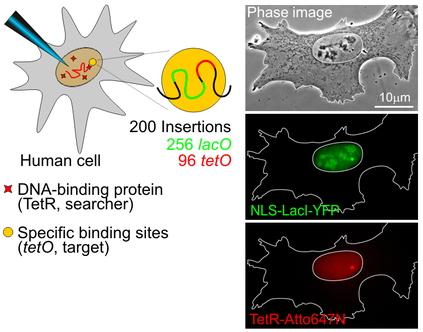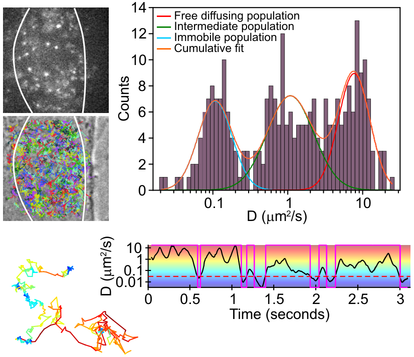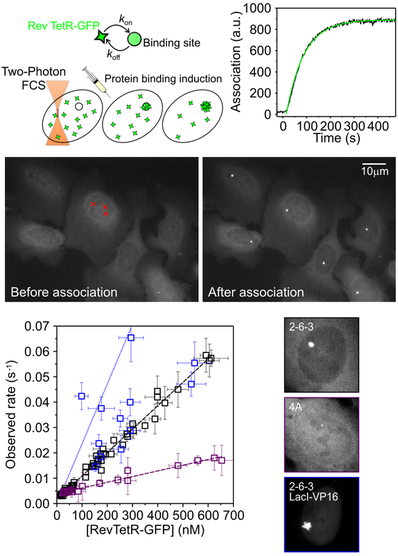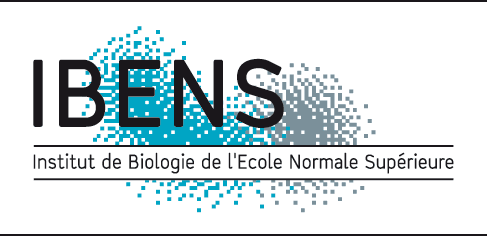DNA Repair
Precise and timely expression of specific genes is fundamental for
the viability of any organism. Specific DNA-binding proteins (Transcription Factors, TFs) transiently associate to promoter sequences on the genome to activate
or repress transcription of specific genes. The way TFs explore the nuclear space, find, and bind to their
target sequences is the key to decipher transcriptional control but is still
subject of debate.
We exploit a live-cell model system to identify what factors primarily orchestrate TFs target search. Our assay is based on human cells containing, at a single locus, specific DNA binding sites (‘target’) for an exogenous DNA-binding protein (TetR, ‘searcher’). First, single-particle-tracking experiments revealed that individual TetR proteins move in a very composite way. They transiently interact with nonspecific DNA sequences, via their DNA-binding-domain, with residence times ranging from hundreds of millisecond up to few tens of seconds. Furthermore, a subset of proteins shows confinement within micron-sized regions even when DNA-binding is impaired, which suggests that the organization of mammalian nuclei plays a role in search dynamics. Next, we directly quantified the association rate constant of proteins to their targets in living cells. Based on our binding assay, the measured rate constant resulted much slower than expected and local decondensation of chromatin at the target site locus did not affect the association rate. In other words, the effective size of a DNA binding site is much smaller than the size of the molecular interaction. The picture emerging from our experiments shows that, in human cells, specific DNA-binding proteins move in a complex environment where they may remain locally confined. They interact transiently also with nonspecific DNA sequences and their target search mechanism is consistent with a non-compact exploration of the nuclear space with very inefficient binding. Related publications
Normanno D., Dahan M., and Darzacq X., “Intra-nuclear mobility and target search mechanisms of transcription factors: A single-molecule perspective on gene expression”. BBA - Gene Regulatory Mechanisms 1819, 482-493 (2012)
People involved
Dr. Mauro Modesti (CRCM, Marseilles)
Collaborators
Dr. Gjis Wuite (Vrei Univeristy, Amsterdam)
|
Target search model system assay
_
TFs nuclear exploration dynamics via single-particle-tracking: Quantification of nonspecific DNA interactions _
In vivo measurement of association rate constants: Inefficient target binding and lose role of chromatin organization |








